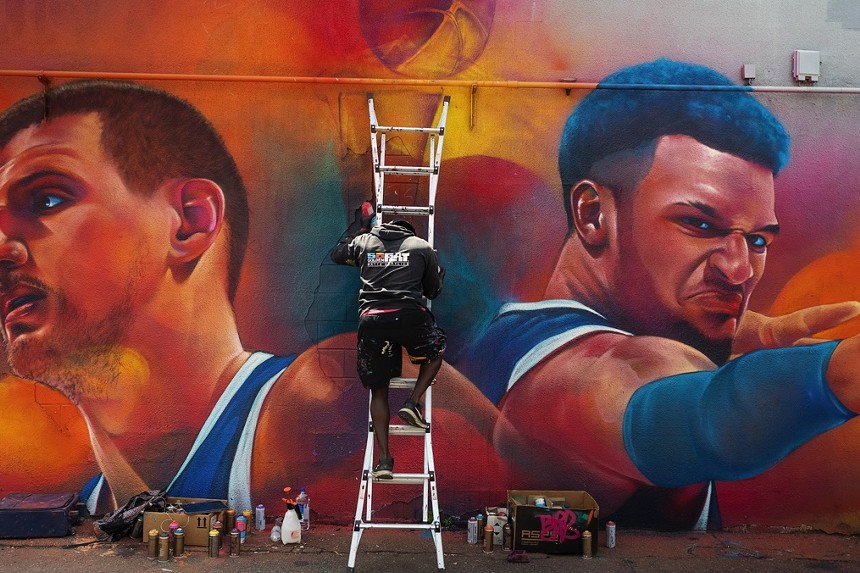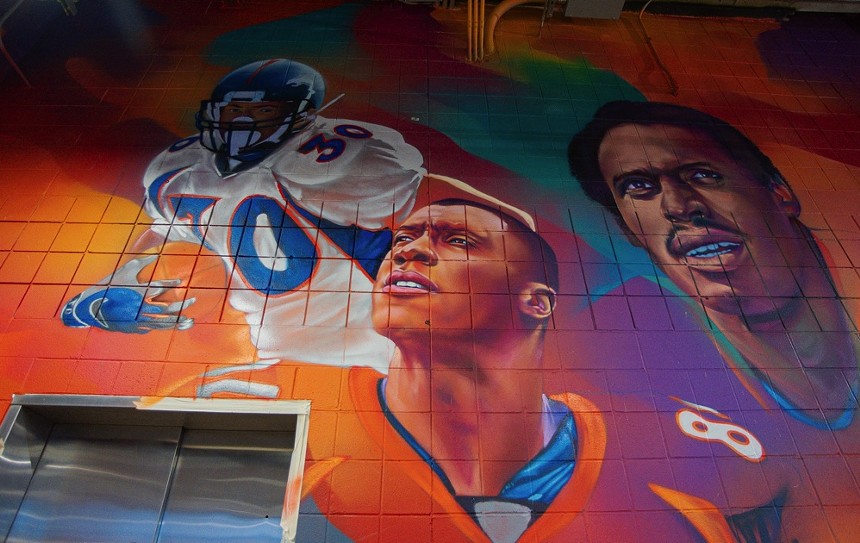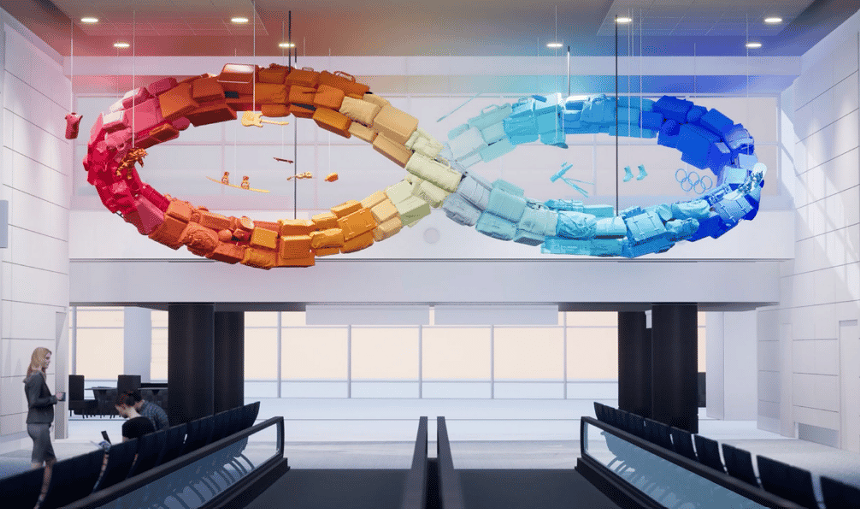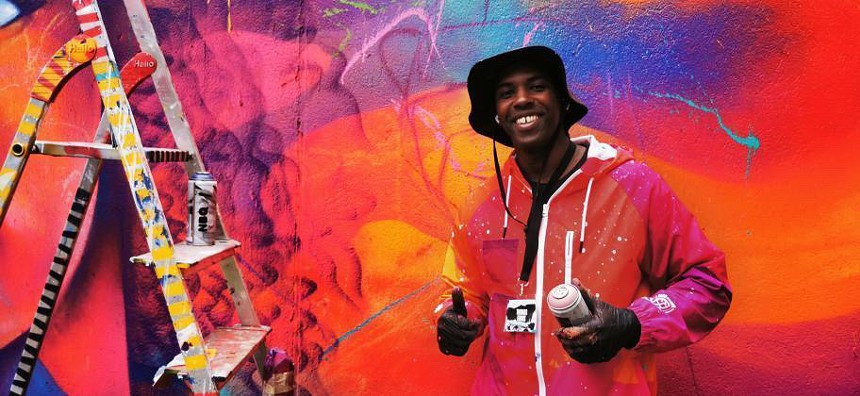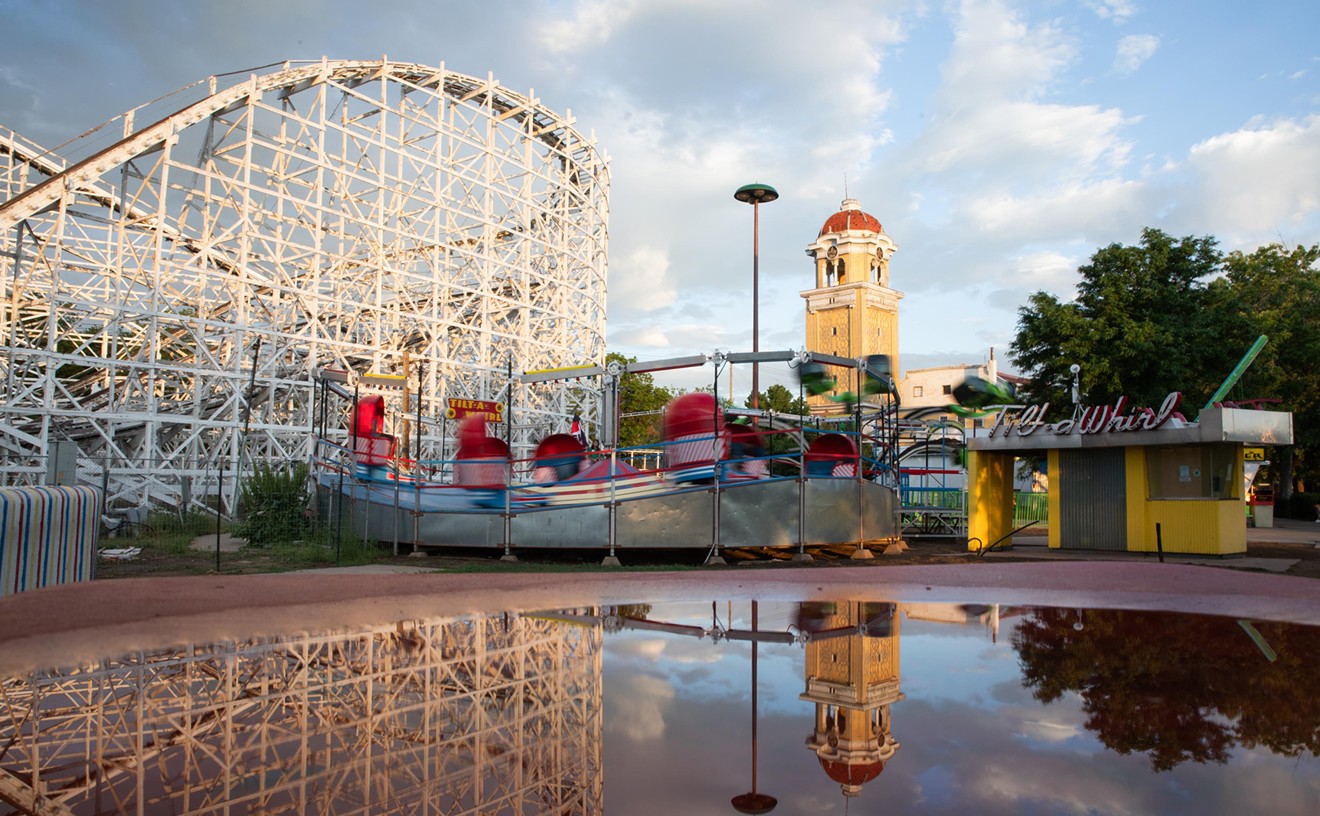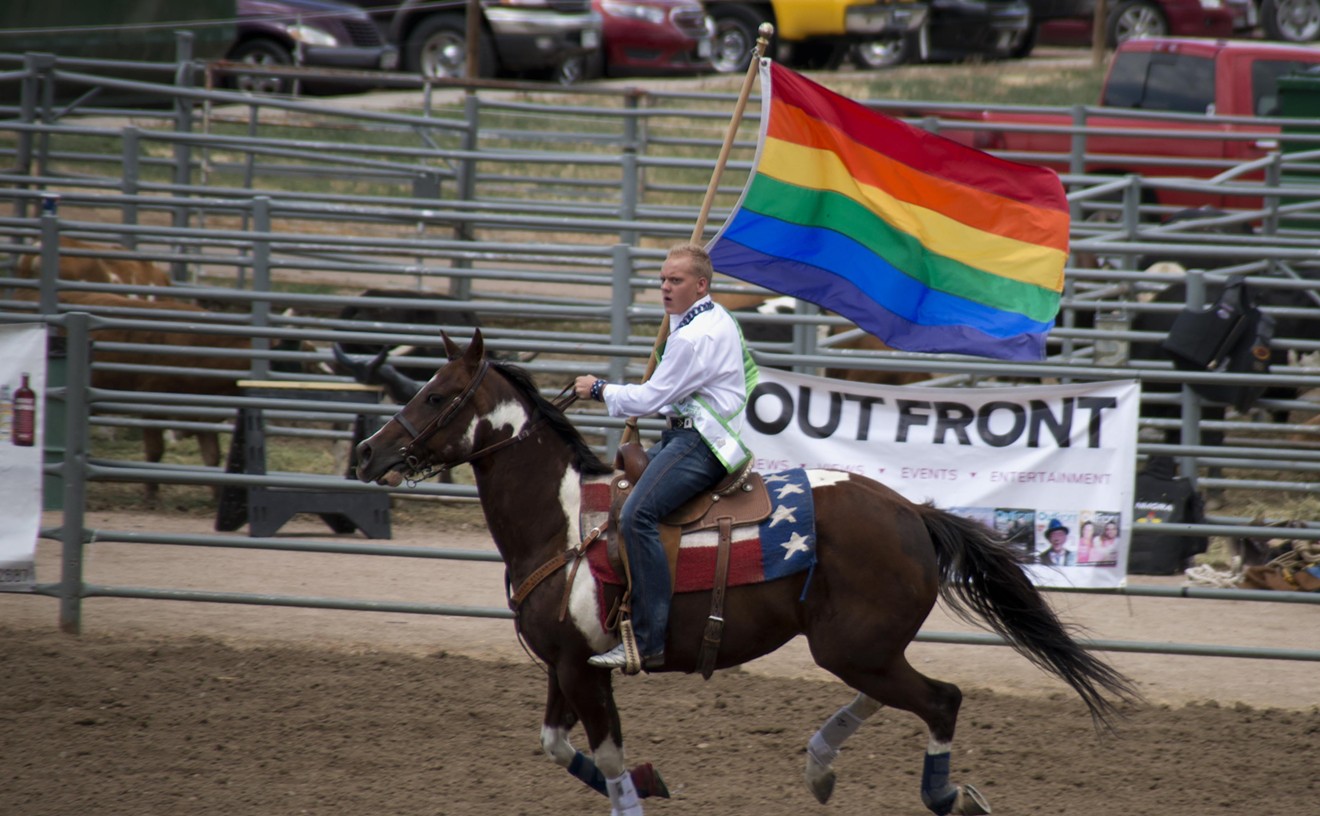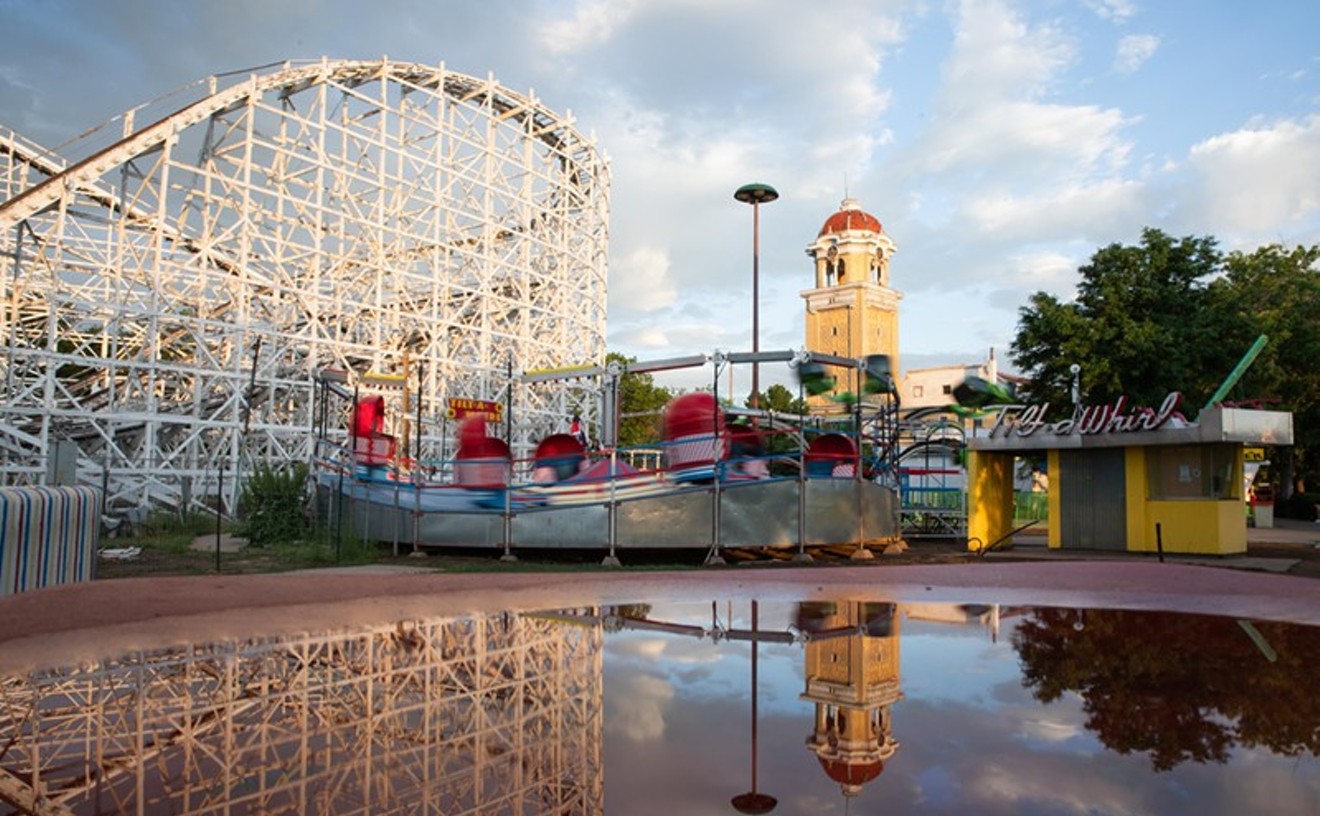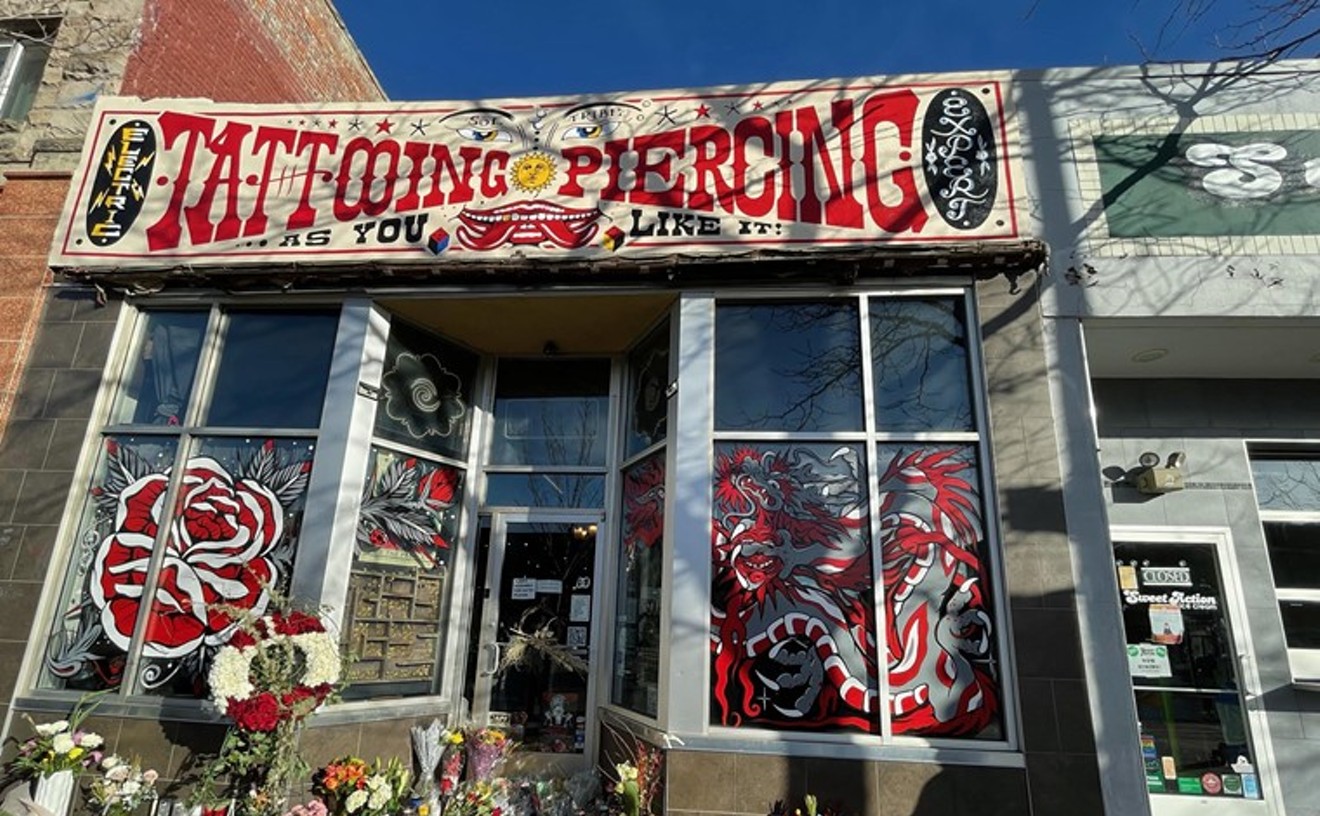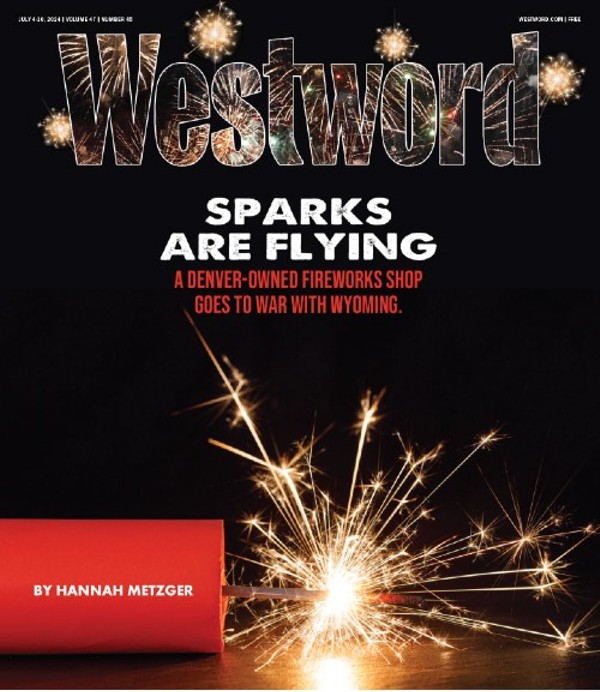Thomas Evans is all about community. The artist, who goes by Detour, doesn't just promote community in his street art; he attributes his success to it. And that success has been big: Evans is now a certified Denver legend known for his colorful, instantly recognizable murals, which often portray advocates and activists who have made an impact on the city.
"I try to do as much as I can in the community because I want to try to build it as much as I can," Evans says. "That is my motivating factor when it comes to why I do what I do."
With community so fundamental to his work, it's no surprise that Evans was given the largest space to paint for Denver Walls, the international mural festival spearheaded by fellow muralist Ally Grimm, aka A.L. Grime, and the RiNo Art District. The festival, which began September 22 and ends October 3, will see creatives from around the world joining the city's innovative own to paint walls around RiNo.
"It was really important to me that we made sure that the biggest space went to a local," Grimm says. "He's painting the entire top deck of the Source Hotel's parking lot. It's a floor mural, which is different. But when you look on Google Maps or you fly a drone on the right-hand side of RiNo, it's very bland, so this will be literally the only pop of color when you look at it from a bird's-eye view. ... It's just such a unique installation, something really unlike what we have existing here. [Detour] absolutely deserves it, and honestly, it was such a challenging space, and he just is so intelligent and wise, I was like, 'If anyone can figure this out, it is this man.'" People have been looking up to Evans since he became a full-time artist in 2014, after moving here in 2006 to attend the University of Colorado Denver, where he graduated with a master's degree in business. His community focus influences each and every work he's created, including the Denver Nuggets mural he painted as the team was on its way to the NBA championship. Fans still stop by the mural on Colfax Avenue and Race Street to take pictures, and Evans says he's tagged in Instagram posts "all the time."
He didn't paint it because he was paid to by the team; in fact, he wasn't paid by anyone to paint the mural. As with his earlier Nikola Jokic mural in Five Points, Evans simply wanted to represent Denver's pride in the Nuggets and happened to have access to the wall. (He'd previously painted George Floyd there, as well as a Denver nurse.) When the New York Times highlighted Evans and the mural, he was careful to share the spotlight with the local artistic community.
Even with all the national attention — he has 100K followers on Instagram alone — Evans remains humble about his Nuggets mural, as well as the rest of his work. "To have that mural go viral in a way and be shared was super fun, but a lot of this comes from other individuals who take interest in documenting it and sharing it," he explains. "Julian Donaldson did a lot of the footage and photography while I was doing that mural, so if it wasn't for him, I don't think it would have a lot of the attention for that. ... That's one of the reasons why artwork gets so much attention. It's that the arts communities are supporting each other."
That recognition, as well as past work with Tamara and Damani Leech, now president of the Denver Broncos, led to a dream project for Evans: painting a mural at Mile High Stadium. The piece depicts Broncos Hall of Famers and is located outside the team store at Empower Field. "I wanted to talk with [Leech] about doing murals and then get them to beef up the project and get them in the idea of doing more murals when they took on that project," Evans says. "And now we have quite a few of us in there painting murals the past couple of weeks, and then hopefully, they'll want to add more later in the season and next year."
While juggling passion projects and commissions — including a tentative one with TNT and the Denver Nuggets — Evans has a long-term job in the works, and it's his biggest yet. Last year he signed a contract for an installation at Denver International Airport, "It's Not What You Take, It's What You Bring Back." The piece is still in the "design phase," Evans says, and he's now working with both the airport and the city on approvals; it could be two more years before the piece is installed.
"Because I do a lot of 2-D work that's community-based, I wanted to really create a piece that was also community-based and to do it in a way that it's a landmark at DIA, iconic at DIA — that you can just point at it and know exactly what it is," Evans says.
Of course, it will also be a community effort: The massive sculpture will be constructed from upcycled suitcases that Evans is accepting through a donation application. "It's not something that's casted or molded — it's actual upcycled luggage from friends or family, neighbors, community around Colorado. So there's a story behind a lot of the pieces on the actual piece," Evans explains. "That's a way where I can actually bring that community signature into my 3-D work. That was a way of me figuring out how to do that in a cool way that was meaningful, thoughtful, intentional."
The suitcases will be painted in colors that represent the sunrise and sunset and used to construct a shape akin to the infinity symbol, which Evans says is "influenced from the idea of takeoff and landing — a looping shape where it just never ends, because DIA never is closed...and basically, there's always a plane in the sky.
"It really encompasses what public art is supposed to be, because it's comprised of people in Colorado, so you feel more connected with it," he continues. "It's like this never-ending story that just keeps looping and looping and looping. So when you're far away, it has this infinity symbol view, but when you get closer, it's like this Möbius shape that sort of loops up and down, up and down."
But for now, Evans is concentrating on Denver Walls. It's been surreal to see how expansive the mural scene has become since he became a full-time artist, at a time when he noticed more creatives moving to the city, bolstering a community that was just beginning to grow through local mural festivals such as Crush Walls. When that festival folded, the RiNo Art District replaced it with another festival, while others, such as Babe Walls and COLORCON, popped up in other parts of the city. "It just slowly grew every year. More people came, more people knew about it. There were a lot more artists popping up," Evans recalls. "I think there are a lot of artists that also decided in 2014, ’15 and ’16 to figure out how to do it full-time. ... There's a lot of opportunity in Denver. I think there was enough room for people to grow and to get projects, build a career, get income to sort of support the next project and yourself."
And now, "Denver is a place that people know as a fun place to paint," says Grimm.
That's what made the city a perfect fit for another festival from World Wide Walls (formerly known as Pow! Wow!), which curates Walls festivals in cities around the world. Grimm had installed a mural for the festival's D.C. iteration in 2021, and after speaking with the curator of that event, she arranged for the fest to come to Colorado. She initially intended for Denver Walls to debut last September; after that effort fell through because of a lack of funds, Grimm found an enthusiastic partner in the RiNo Art District.
Headlining artists include James Bullough, Kimchi Juice and George F. Baker III, aka GFB3. Some artists are traveling thousands of miles to be a part of the experience, such as Faith47 and Keya Tama, a mother-son duo from South Africa. They were on Grimm's "wish list," she says, and the timing worked out perfectly.
Local creatives will be working at the same level as the international artists, Grimm emphasizes. Kimchi Juice, who first painted for World Wide Walls at age fifteen and has work in the White House and the Smithsonian's private collection, will paint alongside Denver graffiti group DF Crew. "It doesn't really matter what walk of life you come from; it doesn't really matter what style of art you pursue," Grimm says. "The museum girl can rough it in the alleyways painting walls in the same way that the guys that come from the street do."
Many artists reached out to Grimm to work with Denver Walls, including Bullough, a Berlin street artist who paints surrealist figures fragmented by space and shapes. "For me, James's style is this beautiful pause, where you almost become detached from time because you're seeing this person in this moment of stillness, but also being torn apart," Grimm explains. "And I think that the way that he paints it helps people have a separation between them in the present moment and, at the same time, a oneness with it. His work is just so ethereal. I was really excited that we were able to have him with us."
Bullough is bringing along his team for his street-art podcast, VantagePoint Radio, and will record some episodes while he's here. VantagePoint is even curating an exhibition at Ryan Joseph Gallery that will open on Friday, September 29, showcasing the work of the most well-known international street artists.
Grimm wasn't surprised to see so much interest from artists outside the country — she herself was drawn to Denver from D.C. after checking out our scene and falling in love with the city's unique street art. "So many of these artists, especially the ones that reached out to us, want to come here to paint. They know that we have RiNo and that street art is really prominent here," she notes. "But also, it's in the mountains. It's a beautiful place. Everyone has been really excited to come out and not just connect with the people in the community, but to see our city and the landscape around it."
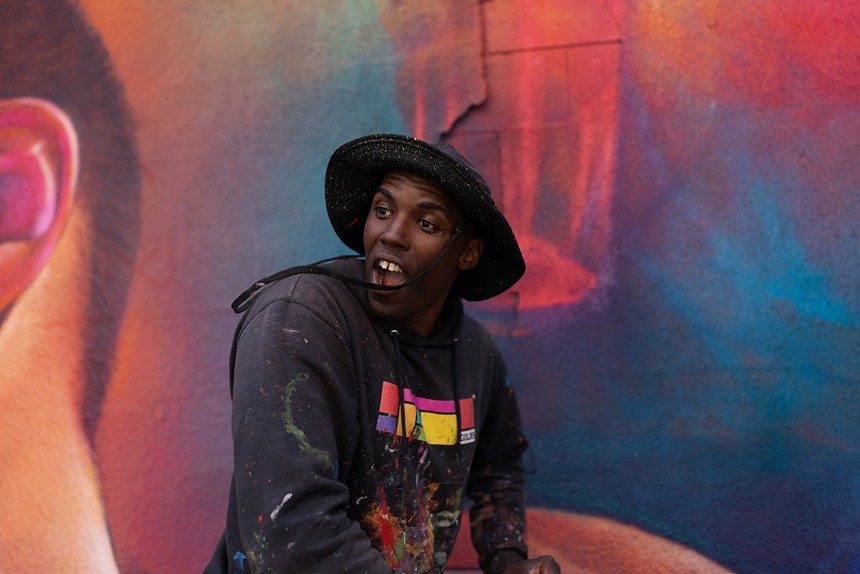
"I try to do as much as I can in the community because I want to try to build it as much as I can," Evans says.
Julian Donaldson
The biggest draw will be an art fair on the 2900 block of Larimer Street on Saturday, September 30, which will include mural tours, family-friendly activations and stations, live music, live painters and more. The day-long event will begin around noon, and "we'll wrap that up at night with music and drinks and food on the 2900 block with the bars and restaurants that exist there already," Grimm says.
The murals created during this inaugural festival will be up indefinitely, she adds, as an ongoing art display and lesson for the city. She wants Denver Walls to open up the community to accepting more artistic styles and contemplating how that reflects the city's diversity.
"My hope with Denver Walls is that it becomes a community event where we're able to call in different types of creatives and different people from different backgrounds to just celebrate the universal message that is art," Grimm says. "Denver has so many beautiful cultures that make the city great, and art is such a beautiful equalizer that we can all kind of find common ground in it.
"My goal is kind of twofold: to create a space where the community can come together, but also a space where we can elevate art within the city," she continues. "I think that it's really important to celebrate local art and creatives, but there's nothing wrong with introducing outside ideas. When you're able to curate intentionally and bring ideas from outside...we're actually creating a mental expansion for people; we're helping them learn things they maybe never would have learned about, or see styles, see ideas that they wouldn't have seen just living within the city. And so my goal is just to elevate our understanding of the world as a community, and understand how Denver plays a role in that, to hopefully inspire people to do greater things within the city."
And when Detour is involved, great things inevitably happen. As a leader in what could now be called the Denver Mural Movement — or to put it in the "-ism" grouping, Communityism — he believes festivals like Denver Walls are what propel the city's art forward.
"I just connect with people when it comes to the arts," Evans says. "It's a way to connect with people and make friends, hang out, have a good time. And then because with mural festivals, the scale of the art is just larger, and you're really just building community when you do projects like this."
Denver Walls runs through October 3; learn more at denverwalls.com. Find more on Detour at iamdetour.com. Some of this piece originally appeared in our August preview of Denver Walls.


